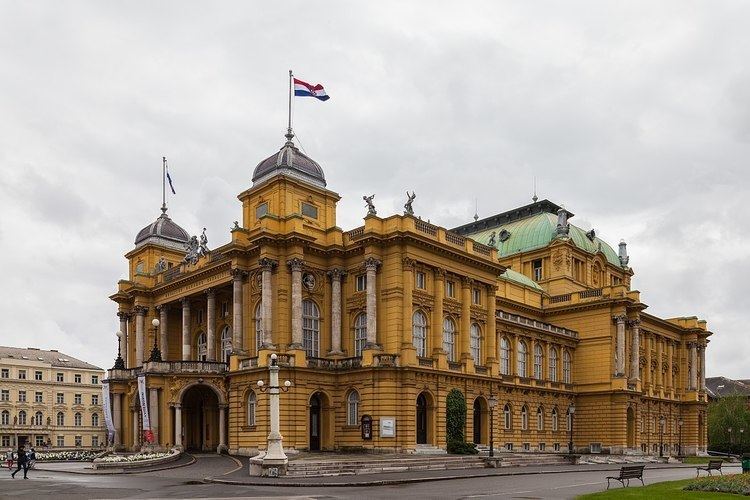Broke ground 22 May 1894 Renovated 1967–1969 Capacity 709 | Opened 14 October 1895 Architect Fellner & Helmer Phone +385 1 4888 488 | |
 | ||
Owner Republic of Croatia (51 %)
City of Zagreb (49 %) Type National theatre, opera and ballet house Address Trg maršala Tita 15, 10000, Zagreb, Croatia Similar Gavella Drama Theatre, Vatroslav Lisinski Concert, Ban Jelačić Square, The Croatian National, Mimara Museum | ||
Edina pli ani on the 20th anniversary of career at the croatia national theatre in zagreb
The Croatian National Theatre in Zagreb (Croatian: Hrvatsko narodno kazalište u Zagrebu), commonly referred to as HNK Zagreb, is a theatre, opera and ballet house located in Zagreb.
Contents
- Edina pli ani on the 20th anniversary of career at the croatia national theatre in zagreb
- Croatian national theatre zagreb croatia
- Overview
- References
Croatian national theatre zagreb croatia
Overview
The theatre evolved out of the first city theatre built in 1836 housed in the present-day Old City Hall. The theatre was first established as the Croatian National Theatre in 1860, and in 1861 it gained government support putting it on par with many other European national theatres. In 1870 an opera company was added to the theatre and in 1895 it moved to the new purpose-built building on Marshal Tito Square in Zagreb's Lower Town, where it is based today.
Austro-Hungarian emperor Franz Joseph I was at the unveiling of this new building during his visit to the city in 1895. The building itself was the project of famed Viennese architects Ferdinand Fellner and Herman Helmer, whose firm had built several theatres in Vienna. Celebrations marking the 100th anniversary of the building were held on October 14, 1995.
At the entrance of the theatre is located the wall fountain The Source of Life (Zdenac života), designed by Croatian artist and sculptor Ivan Meštrović in 1905.
Many of Croatia's leading artist have worked at the theatre. Its first manager and dramatist was the Greek-Croatian poet Dimitrija Demeter, a leading activist of the Croatian national revival movement, with Ivan Zajc as first conductor. Jakov Gotovac was the Theatre's opera conductor from 1923 to 1958. The famous Croatian theatre director Branko Gavella began his career here, as did the first Croatian prima ballerina Mia Čorak Slavenska.
The theatre has also seen many international artists including Franz Liszt, Sarah Bernhardt, Franz Lehár, Richard Strauss, Gerard Philipe, Vivien Leigh, Laurence Olivier, Jean-Louis Barrault, Peter Brook, Mario del Monaco, José Carreras.
There are also Croatian National Theatres in Split, Rijeka, Osijek, Varaždin and Zadar.
